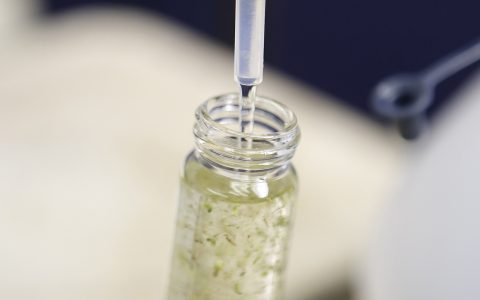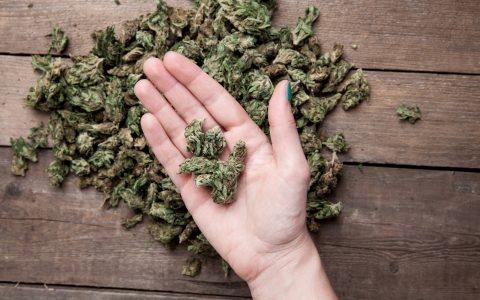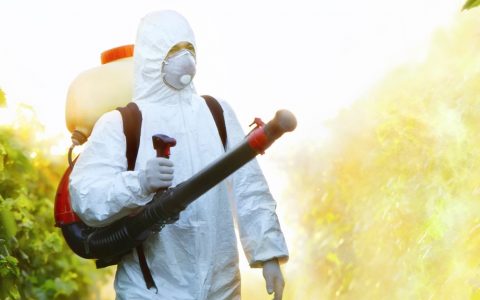There’s no hard data available, but a survey of industry insiders contacted for this article suggests that fewer than half of California dispensaries and delivery services lab test the marijuana they sell. The actual figure could be even lower. After all, testing isn’t currently required under state law. In 2015, lawmakers passed a measure to require testing of medical cannabis, but that won’t be enforced until January 2018.
San Francisco dispensary operator
More troubling is what happens to cannabis that turns out to be contaminated. According to dispensary operators and other industry insiders interviewed for this article, cannabis rejected for mold, fungi, pesticide residue, or other contaminants often stays in the supply chain. It may end up on the black market, shipped out of state. It could be processed into concentrates or edibles. Or marijuana rejected by one dispensary may simply end up being sold across town by someone else. If your dispensary isn’t testing its products, you could be smoking some right now. It’s virtually impossible to know.
In a study published in October, Berkeley-based Steep Hill Labs claimed it found residual pesticides in 84 percent of cannabis tested over a 30-day period beginning in mid-September, the peak time in the state’s marijuana harvest.
All that cannabis would have failed safety standards in Oregon. In California, all of it can be sold.
Why does testing matter?
The potential consequences of contaminated cannabis recently hit home with the release of an article in the journal Clinical Microbiology and Infection.
One of the article’s authors, Dr. Joseph Tuscano, an oncologist and researcher at UC Davis Medical Center in Sacramento, Calif., had been treating a young man in his 20s with leukemia. After a stem-cell transplant, the prognosis was very good. The leukemia was gone, and the man seemed likely to recover. Then, very suddenly, he developed a severe lung infection.
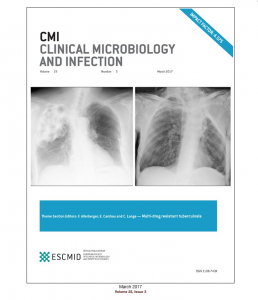 A UC Davis oncologist’s article in this medical journal has opened questions about the safety of at-risk patients using untested cannabis.
A UC Davis oncologist’s article in this medical journal has opened questions about the safety of at-risk patients using untested cannabis.
One consequence of cancer treatment is that patients’ immune systems become so compromised that even flowers and houseplants can pose a mortal risk. It’s common for bacteria and fungi that healthy people would never notice to cause sudden, severe, and sometimes fatal pneumonia in cancer patients. That’s what happened to Tuscano’s patient, who survived leukemia only to die of what turned out to be a rare fungal infection.
Then it happened again. Another young leukemia patient, another good prognosis, another sudden and severe lung infection caused by the same rare strain of fungus. This patient, however, recovered. When Tuscano asked him about his lifestyle, trying to identify a cause or any links between the two cases, he discovered the two men both used marijuana. The dead patient had vaporized a cannabis “mist” medicinally as part of his treatment; the survivor smoked recreationally prior to his leukemia diagnosis—which was when he developed the infection “instantly,” Tuscano told me.
“When you have these rare infections, you wonder, ‘OK, how did this patient get exposed to this?’” he said. “We never suspected cannabis use … but after I interviewed the patient, one of the common links was the use of medicinal marijuana.”
It’s impossible to know for certain if the deadly fungus came from cannabis. Tuscano couldn’t test the cannabis the two men had used. It was gone. The next-best thing was to find out if the fungus was in marijuana generally.
Voluntary testing, poor results.
Unlike Colorado, Oregon, and Washington, there is currently no requirement in California for cannabis to be lab-tested before it is sold. Testing isn’t slated to begin until Jan. 1, 2018—and that’s assuming everything goes according to schedule. Some already worry the state’s adult-use rollout is destined for delay.
In the meantime, dispensaries, delivery services, and growers can voluntarily submit crops to testing labs to find contaminants and to determine their products’ THC content—a sought-after marketing metric, since the higher the number, the easier the cannabis is to sell.
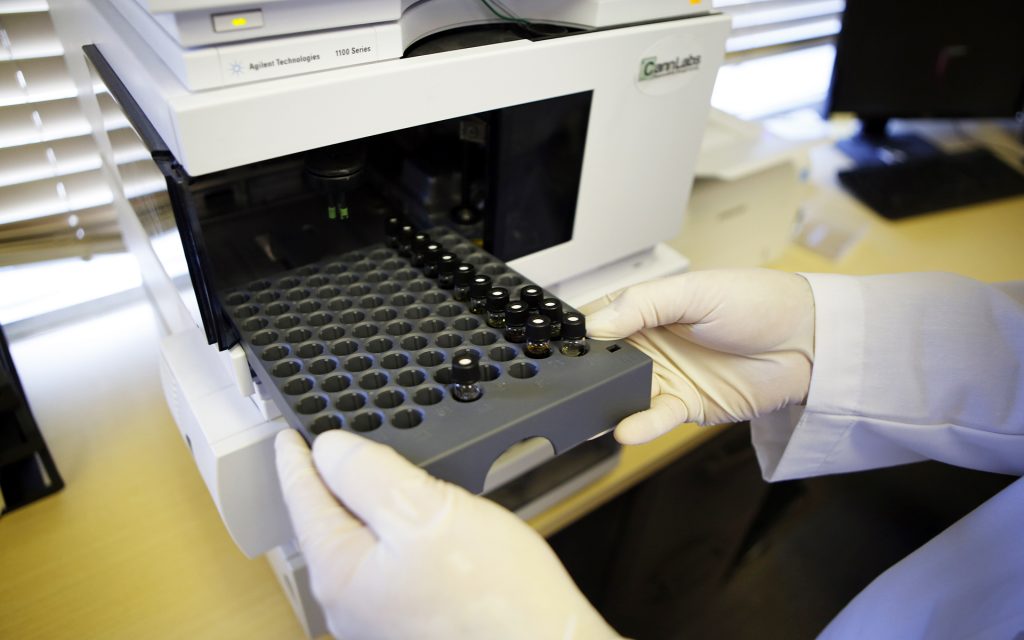 A lab technician in Denver loads a tray of cannabis samples into a testing machine that analyzes the samples and reports their chemical content and strength. (AP Photo/Ed Andrieski)
A lab technician in Denver loads a tray of cannabis samples into a testing machine that analyzes the samples and reports their chemical content and strength. (AP Photo/Ed Andrieski)
One of Tuscano’s colleagues at UC Davis, Dr. George Thompson, had a connection to Steep Hill Labs. The lab selected, at random, marijuana samples they’d received from 20 different Northern California dispensaries. Each was tested for rare and common fungi and bacteria. The result? Every single one of the 20 samples was contaminated with a variety of both. They contained E. coli, Aspergillus, various strains associated with pneumonia, pathogens known to cause common infections—as well as the rare fungus that killed Tuscano’s patient.
“All these organisms were in there, and so many other ones as well,” said Tuscano. “Before this, I never really suspected there was a link.”
A false perception of safety
Since the marijuana his patients consumed wasn’t tested, Tuscano can’t know for certain that his patients’ fungal infections came from cannabis. Instead, he can draw only a very strong and suggestive connection.
We don’t know for sure if dirty cannabis led to infection. But researchers suspect a strong connection.
There’s also a few clear warnings. For starters, immunocompromised people should not smoke or vaporize marijuana, Tuscano and his co-authors of the letter say. Neither smoking nor vaping nor filtration through a water pipe destroys fungus. Cannabis ingested orally, for example through edibles or tinctures, is a safer option.
There’s a cultural phenomenon at work, too. Legalization and the widespread acceptance of physician-recommended medical marijuana—a proven political winner, even in red states—have created a “perception of safety,” the researchers wrote. Consumers and even regulators have “unknowingly ignored a product that can be contaminated with infectious agents and thus harbor potentially lethal risks
“People need to quit assuming what they get from the dispensary is safe,” Tuscano told me. “It needs to be tested.”
Caveat emptor at the dispensary counter
The problem is, under state law, it isn’t. Outside some local jurisdictions with their own testing requirements, California cannabis consumers take a leap of faith with every hit.
This leaves it up to patients and consumers to determine when a product is safe. Often, that relies on assumptions: assuming a dispensary is sincere when it says it tests its medicine, and assuming that test results in fact determine whether a product is or isn’t sold.
“I think you can tell when the culture of the shop embraces testing,” says Nicholas Smilgys, a co-founder and former chief buyer at Flow Kana, a San Francisco-based outdoor farm-to-consumer delivery service. A customer can demand to see a product’s lab results before purchase, but in high-volume dispensaries where a customer’s time at the counter is measured in minutes, such discretion isn’t always encouraged.
Lab rejects can reach the market
Kevin Reed is founder and CEO of The Green Cross in San Francisco. The dispensary has operated for more than a decade in various iterations, first as a storefront, then a delivery service, and now a combination storefront and delivery service. The store, one of the first to apply for a city license, has a history of activism and engagement that has earned it a good reputation among consumers. Before anything is sold, Reed has it sent for testing to CW Analytical, an Oakland, Calif.-based competitor to Steep Hill.
“A whole lot of shenanigans happen at the buying point.”
To this day, a “multitude of small and large scale commercial growers … attempt to sell” products that Reed’s testing discovers to be contaminated by pathogens or pesticides, he told me. The Green Cross rejects that medicine and sends the supplier on his or her way, Reed said, but “unfortunately, with the current [California] model, we cannot ensure that once a product is removed from our supply chain that it does not get sold to other dispensaries,” he said.
A lot comes down to a dispensary’s buyer, explained one San Francisco-based dispensary operator who spoke on condition of anonymity. “A whole lot of shenanigans happen at the buying point.”
How dirty product gets sold
The operator offered a hypothetical situation as an example: A new dispensary opens up. The owner is a marijuana neophyte, maybe a newcomer from law or tech or real estate. Unfamiliar with the goods on the market, the owner hands over purchasing power to someone with cannabis-industry experience. Now, suppose that buyer has a budget of $1,400 a pound and is approached by a grower with lower-end cannabis for sale. Neither party is interested in the time and expense of a lab test.
“The seller says, ‘It’s got some issues, but I’ll give it to you for $800.’ So he gives it to him for $800, and the buyer keeps the extra $600,” the operator said. “That happens a ton in the industry.”
A grower with lab-rejected cannabis is faced with a choice: Discard the harvest and eat the loss or shop it at a discount until it sells.
“Or let’s say I’m a grower and I have a hundred pounds of OG Kush,” the dispensary operator added. Only a few grams are required “for testing, [so] I’m only going to send in my best stuff. Does that represent my entire crop?”
If a lab finds pesticides in a batch of cannabis and a dispensary rejects it, the grower is faced with a choice: Discard the harvest—and with it months of work and investment—or shop the bud around until it sells. Unless there is something catastrophically wrong, such as rampant pest damage or mold so out of control it’s visible to the naked eye, “it makes its way to a buyer somewhere,” the operator said. “And if it doesn’t make its way as a flower product, it’ll make its way to someone who will extract it” into vape-pen cartridges, extracts for dabbing, or oil to be used in edibles.
One might think that’s a safe and acceptable fate, assuming the extraction process somehow kills off pests and eliminates contaminants. It does not, say lab scientists, who explained that when cannabinoids and terpenes are concentrated in extracts, certain fungi and pesticides are concentrated as well—sometimes disproportionately compared to the sought-after cannabinoids and terpenes.
But the point, the operator told me, is this: Very little marijuana is voluntarily discarded. “Everything,” he said, “makes its way into the supply chain somehow.”


